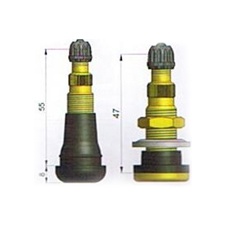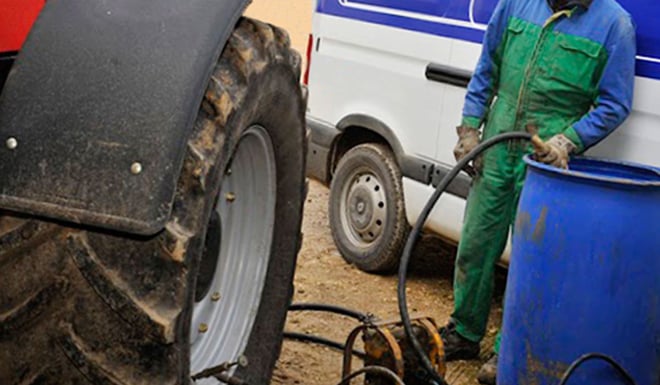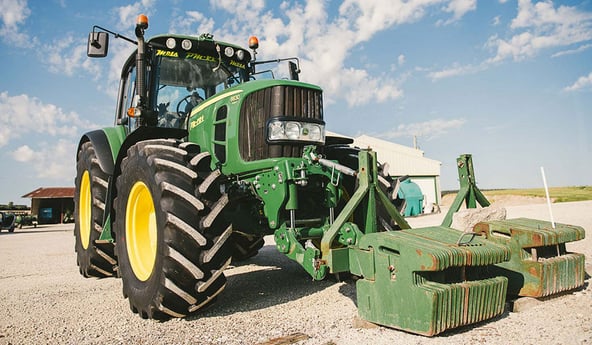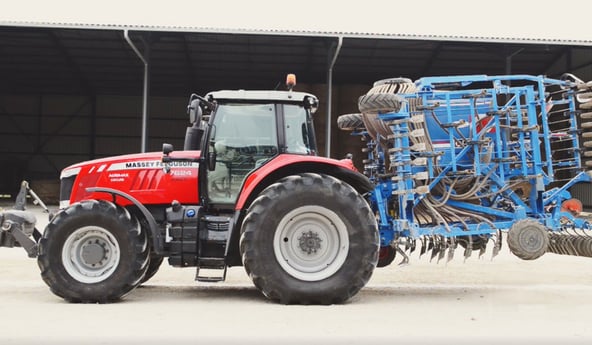Do you need more weight? Inflating your tractor tyres with water can improve their grip more cheaply than adding metal weights.
However, this solution comes with several drawbacks that are not often talked about, and beyond the indisputable initial savings from this solution, in the long term, it’s not as obvious. Water ballast can work out more expensive and more demanding, on a daily basis, depending on the work to be carried out and on your farm context.
The initial cost of water ballast is by far the lowest…
Before you begin, check with your tyre distributor that there are no incompatibility problems. You should bear in mind that water ballast is generally an all year operation as it is not easy to implement.

Tyres, both with and without air chambers, can be inflated with water. However, you need to check that the valve is compatible, in other words that it is an air/water valve. Ideally the tyre should be filled to 75% with a mixture of water + anti-freeze to avoid creating a swaying sensation at low speeds and damaging the tyre.
For the actual inflation, the traditional method is to but the mounted tyre at around 0.5 bar pressure, placed vertically with the valve towards the top. Then pour in the water up to the level of the valve, which will fill to around 75%, and then finish by inflating with air.
1. The main disadtantage: permanent dead weight on the tractor
When you are working the fields with heavy tools, you need to add weight to the engine axles to increase your output or to lower the machine’s centre of gravity, to improve traction and reduce spinning.
However, this is not the case for road transport, farmyard work or any other tasks for which you might use your tractor.
DEAD WEIGHT = overconsumption = wasted money
Therefore, the main disadvantage is the dead weight generated by this ballast, which will have an impact on fuel consumption throughout the year, even when ballasting is unnecessary.
2. Water ballasting takes more time than adding weights
It takes around 2 hours to inflate your tyres with water and add 3 to 4 tonnes and over 2 hours to empty them as it is difficult to remove all the water. In general, you implement this ballasting technique for several months.
In comparison, adding weights to the front and rear enables you to increase the tractor’s weight by 4T in 1/4 hour.
3. Need to inspect the tyre pressure very frequently
The load is carried by a small amount of air, around 25% of the tyre volume. Consequence: any loss of air results in a huge reduction in tyre pressure, requiring that you monitor the pressure frequently and add air much more often than when using normal tyres.
As there is less air, it is more difficult to balance the front and rear of the machine, this also reduces shock absorption and comfort (possible to compensate with axle suspension). Before ballasting your tyres, also check the manufacturer’s indications on the filling procedure.
4. The addition of antfreeze in your tyres – a problem for livestock farmers
In winter and/or in the mountains, temperatures frequently drop below 0°C. It is therefore vital to add a quantity of antifreeze (around 5% of the water volume). If you don’t put antifreeze in the tyre, the tractor could become completely unusable as the weight of the ice will crush the tyre at the first rotation of the wheel, and the tyres will be permanently out of action.
5. Water ballasting is not suitable for working/driving fast on roads or in fields
Water ballast is not suitable for working at high speed in fields or on roads. When driving fast: with water in the front wheels, there will be a pendulum effect due to the movement of the water weight in the tyres which could cause your tractor to sway when turning and destabilise the whole vehicle.
In some cases, there is no need for ballast. For example: when treating crops, the tractor needs to be light as the aim is not to increase traction but to increase driving speed to complete the treatment correctly with no negative effects on crop development. Reducing the global weight of the tractor will reduce rolling resistance and consequently protect the crops and reduce fuel consumption.
Beware of excessive ballast, it’s not useful if the tyres are not adapted
We often blame the weight of the tractor for loss of grip or excessive spinning, whereas the only things that can transfer the tractive force to the ground are the tyres, they are often not give the importance they deserve. Tyre quality can be the solution to avoid ballast, be it water ballast of additional weights.
To achieve this, work with your tyre retailer to find the tyres that best suit your requirements: in working time, type of work and your farm’s modus operandi. This may avoid you having to buy additional weights or carrying around 3 extra tonnes of water all year round for no reason.
If you would like to learn more and take it a step further to increase your farm’s profitability, the Tractor tyre experts have prepared a free, highly detailed eBook which explains the essential role of your agricultural tyres on your productivity. Click on the button below to download the guide:
Most people who read this article have also read some of the following articles:
- 7 keys to know the impact of ballast on agricultural tyres
- How and why to ballast your tractor tyres or agricultural tyres
- What are the consequences of excessive weight on my tractor tyres?
- Distribution of weight: ballast with liquid in the tyres or cast iron weights
- What is the right load distribution for my tractor tyres?
- Incorrect ballasting: what are the risks for my tractor tyres
The Bridgestone-agriculture.eu blog is written and edited by tractor tyre experts who are available to provide you with advice on all things relating to tyres. They will help you to maximise your productivity with information on all topics linked to agricultural tyres: Cheap tractor tyres – Technical data for farming tyres – Soil compaction solutions – Sprayer tyre pressure – Why and how to ballast your tractor tyres – When to use twin wheels – The mechanical causes of abnormal wear – etc.
This information is intended only to make you aware of the technical and functional aspects of agricultural tires and their use. It does not allow you to make a judgment or a definitive conclusion on a given problem. Only your agricultural tire expert is able to make a technical assessment and take a final decision, case by case.
Leave a
commentary
Your email address will not be published.
Required fields are indicated with *








